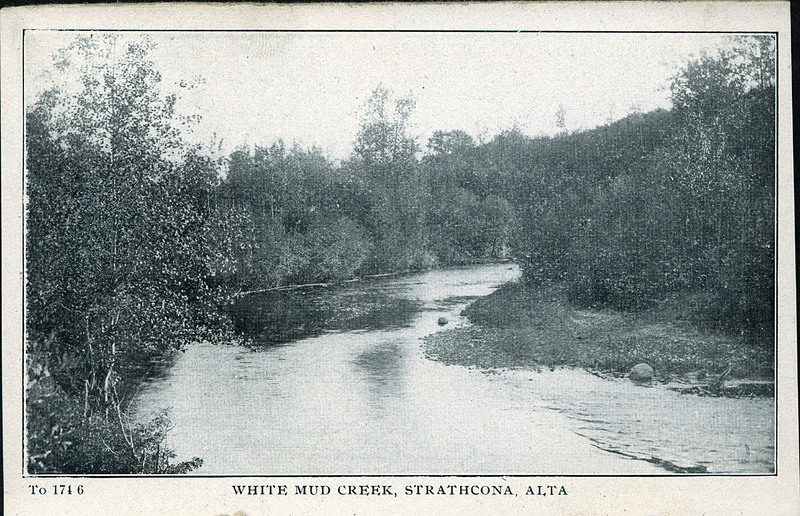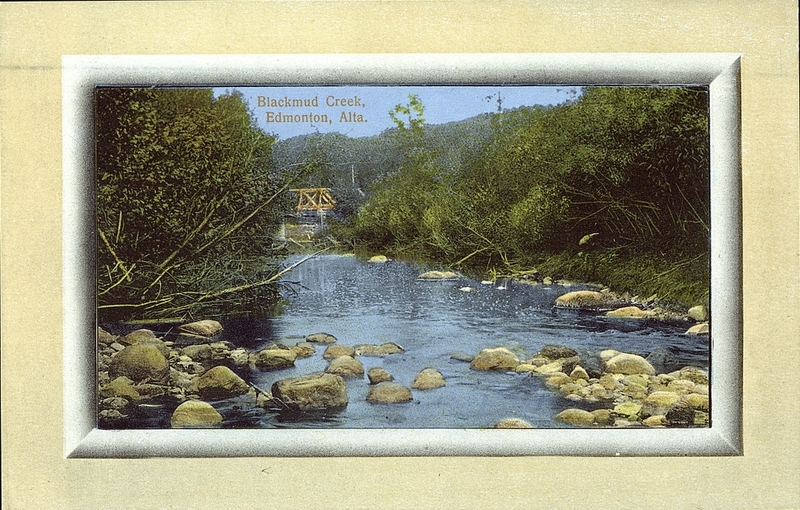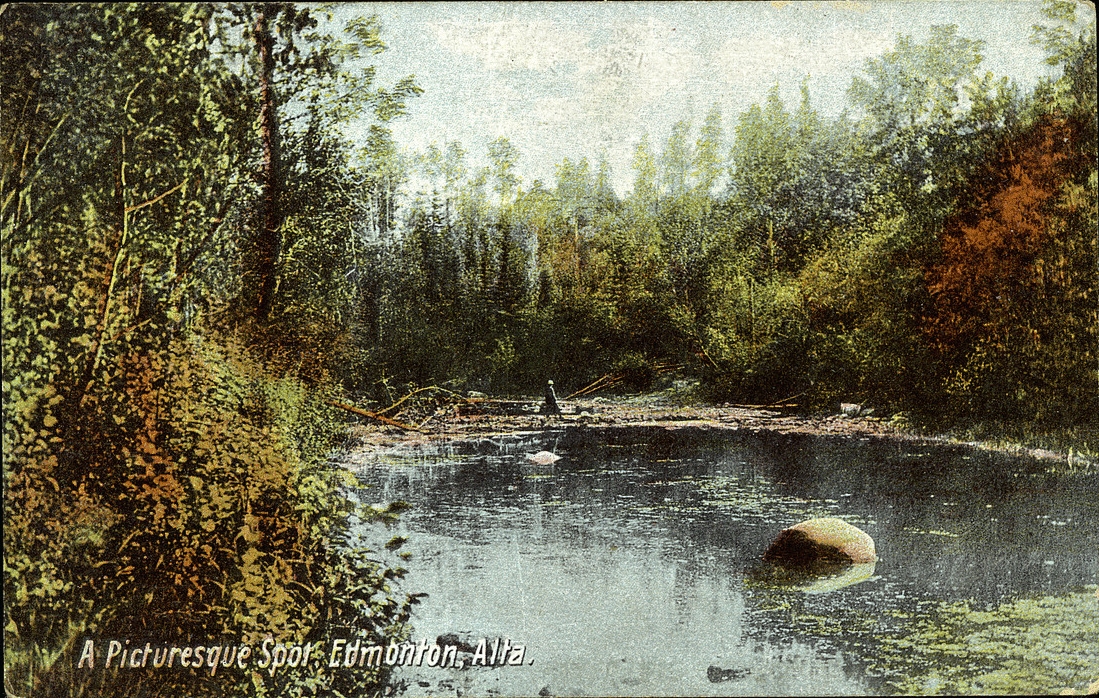The River Valley Has Always Been An Attraction
Rabbit Hill is a short walk west from Larch Sanctuary. The knoll is a relic of the last ice age, and one of the highest points in Edmonton. Aboriginal hunters took advantage of the excellent view to watch for bison and deer at drinking spots in the river valley below.
Archaeologists have found “garbage” here left by people who lived thousands of years apart. The most common remains are small stone chips left from tool-making, as well as fragments of the tools themselves. The earliest visitors probably camped on Rabbit Hill 12,000 years ago, and used tools created by sharpening petrified wood and mudstone.
Because the North Saskatchewan valley was carved out from top to bottom, the earliest archaeological sites are on the highest river terraces. Remarkably, occupations dating from 8,000 years ago can be found even on the lowest terraces.
The valley was an attraction since it contained food and tool-making resources of critical importance to early humans: abundant plants, animals and fish as well as quartzite cobbles and chert pebbles. Chert and quartzite break in a predictable fashion, and can be fashioned into sharp-edged projectile points, scrapers and knives.
Many generations of Indigenous people camped near the “bend in the river” that is Edmonton. It is reasonable to imagine rows of tipis as the first homes in Larch Park.
Before contact with the Europeans, Central Alberta’s aboriginal people fished and followed bison herds, dried the meat, prepared clothing and shelter from the skins, and moved along the North Saskatchewan River from season to season. They traded with other tribes through a complex network that spanned the continent.
Changing Trade and New Industry
When the Europeans arrived, the local people began trading beaver pelts for tobacco, decorative beads, rum, metal cooking pots, knives, axes and firearms. They served as guides, interpreters, paddlers and porters for the fur trading companies.
In the late 18th century, Edmonton became a permanent settlement. The Hudson’s Bay Company, the Northwest Company and the X.Y. Company all established posts along the river. Fort Edmonton soon became the hub for a trading network that routed furs and other goods down the River from the surrounding territories.
The use of the river valley by the fur trade set the stage for later industries: brick making, coal mining and dredging the river for gold. Many of the trails established during the fur trade became the cart tracks and ultimately the roadways of the 20th century.




The Prairie Postcards Collection consists of over 14,000 postcards depicting life on the Canadian Prairies from the late 19th through the mid 20th centuries. The collection is housed at the University of Alberta’s Bruce Peel Special Collections Library and viewable online.
Images license by the University of Alberta Libraries under the Attribution - Non-Commercial - Creative Commons license.

